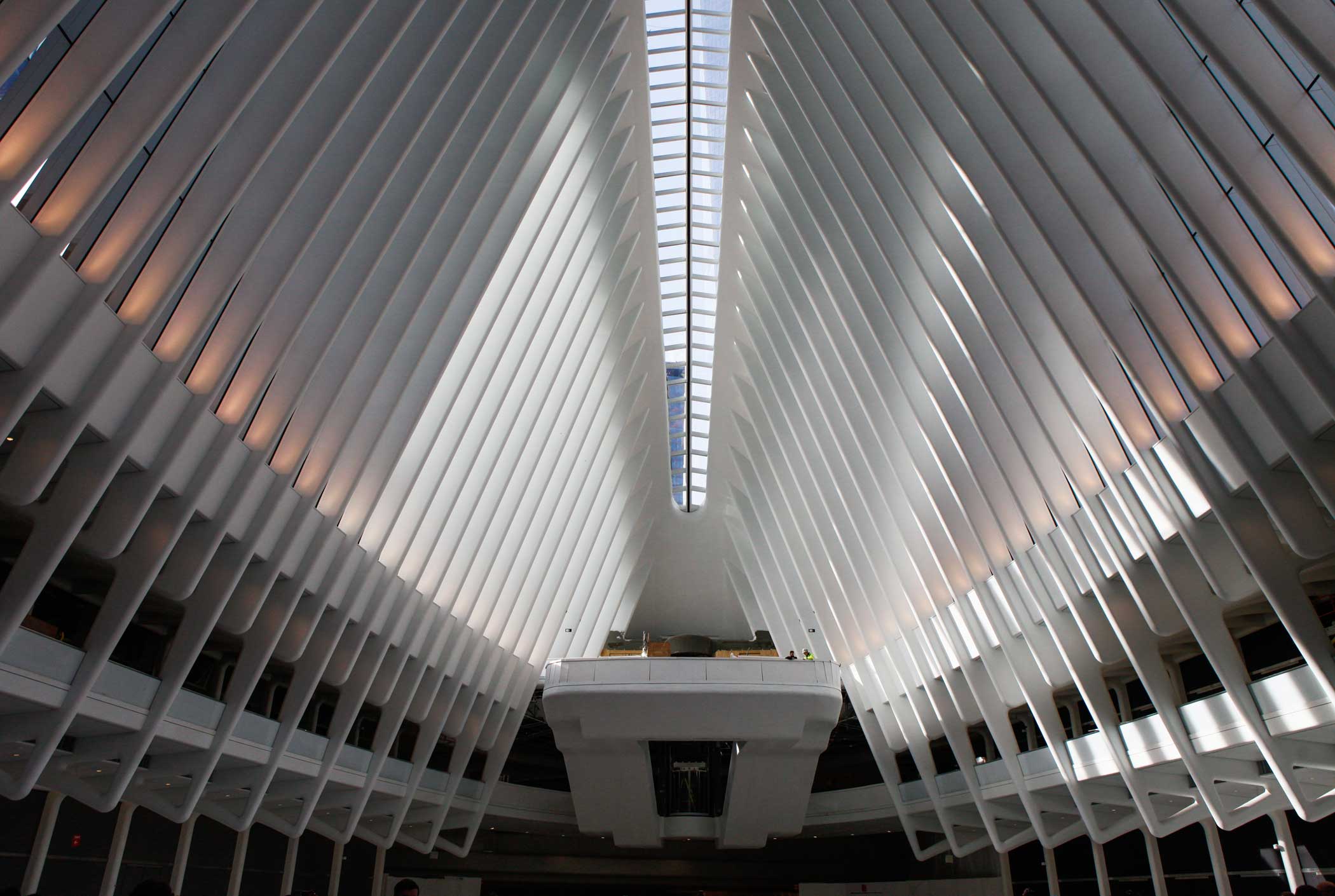
The imposing rib cage-like structure at the heart of the World Trade Center Transportation Hub opened to the public on Mar. 3, 12 years after Santiago Calatrava’s original plans were first unveiled.
Thursday night and Friday morning, the Oculus’ first public visitors walked tentatively through the white space — heads craned back with cameraphones held aloft. They stopped in the middle of the vaulted interior and gazed up at the glass roof’s white structure above them.
Click & drag mouse to navigate 360 video below.
In the daytime, snow slowly accumulated on the massive sunroof. At night, the darkness pressing against the glass made the transit cathedral seem to glow.
Twelve years and $4 billion later, the hub’s design — inspired by a child releasing a dove into the air — is inextricably linked to the massive delays and overspending that have come to define the project. The hub is the most expensive train station in the world.
People were excited to step out onto the uninterrupted white floor for the first time, but there was not exactly a celebratory atmosphere. Instead, people surveyed or snapped photos while seemingly trying to decide for themselves whether it was worth it.
The transit hub’s budget nearly doubled during construction, to the Port Authority’s unfathomable $4 billion price tag. So the station has seemed well-deserving of its public characterization as a ‘boondoggle’ (which the Oxford English Dictionary defines as “a trivial, useless, or unnecessary undertaking; wasteful expenditure”). Calatrava’s conceptualized dove wings can spread a bit with window panels that open at the top, though they won’t physically unfurl to the full extent of the original retractible roof plan that Port Authority scrapped for budgetary reasons. But to people who have been waiting (on principle at this point, rather than necessity), finally opening the Oculus doors was the next best thing.
Yet, the Oculus currently offer very little since none of the retail spaces are close to being ready, and the subway line connections and many entrances are still slated to open throughout the spring.
“I had many expectations about this subway station, because you know $4 billion — you’re expecting something from Mars. But it’s really very arresting,” says Juan Carlos Serrano Urdaneta, 54, who lives on the Upper West Side. “It’s better inside than outside, because outside it looks a little congested. I’m not sure whether it’s a bird or dinosaur. But inside, you see the magnificent space.”
Paola Evangelista, 36, says she commutes to the area and was familiar with Calatrava’s other designs. She was excited for the chance to finally walk through. “From outside, it has always looked, to me, like an animal,” she says, looking up at the imagined ribcage. “You’re looking from the inside of the animal — like a gigantic whale.”
Sonya Gropman, 53, a tour guide who holds a tour that spans from Tribeca to the 9-11 Memorial every Friday, has watched the Transit Hub’s construction take place for years. “It feels like a shrine,” she says. “Maybe that will change when businesses open, but right now it has a very tranquil and meditative feeling to it. I think it was worth the wait.”
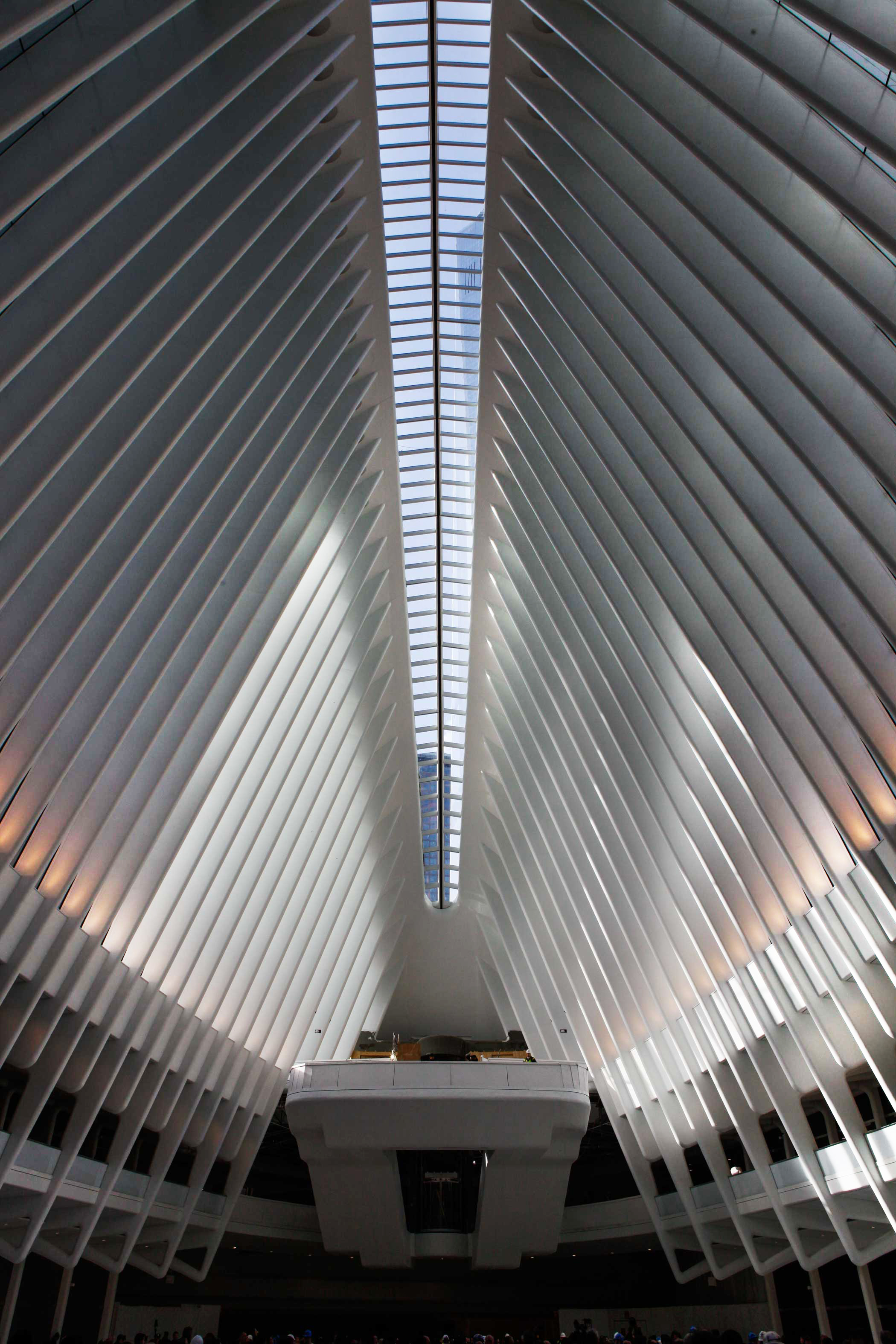

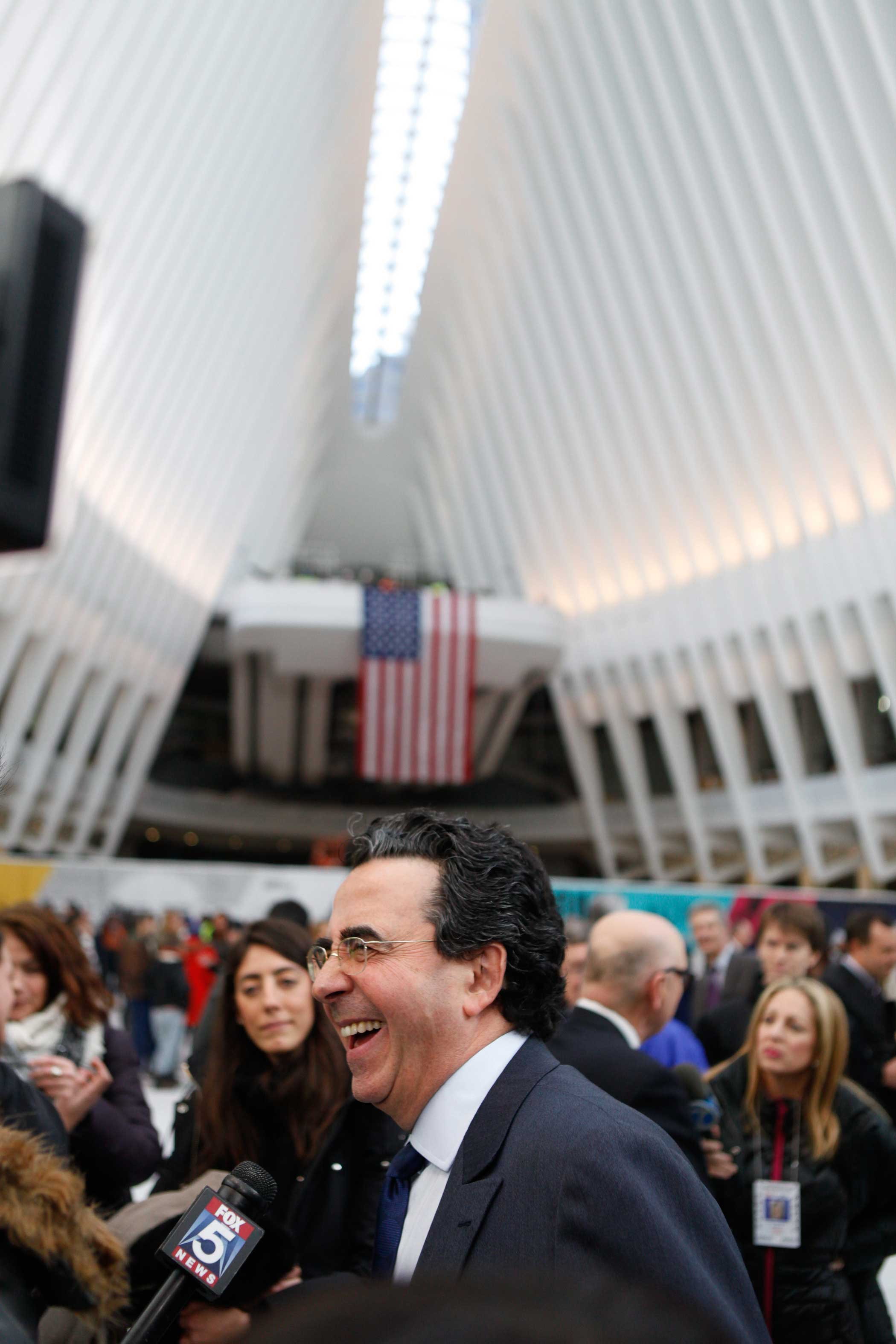
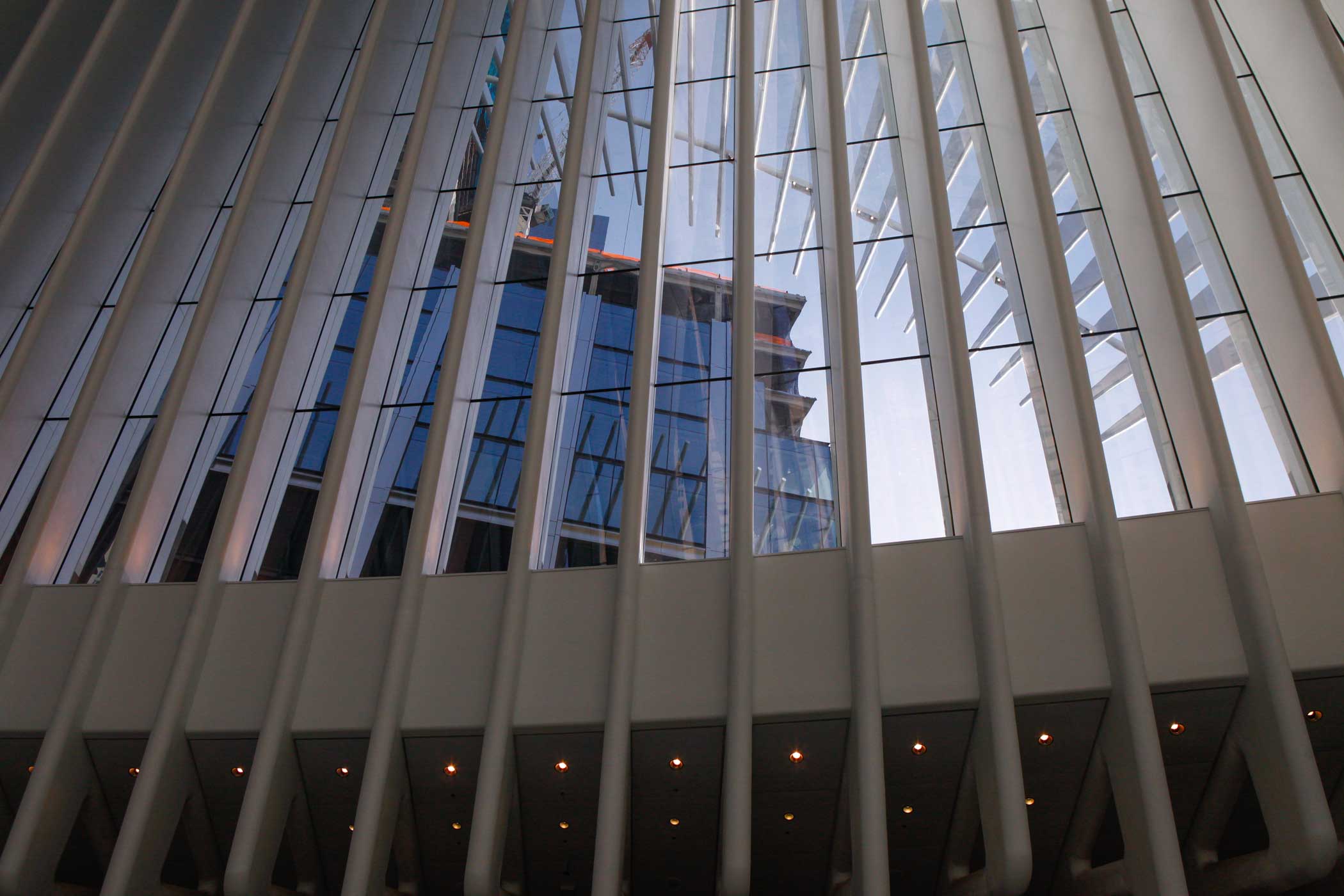
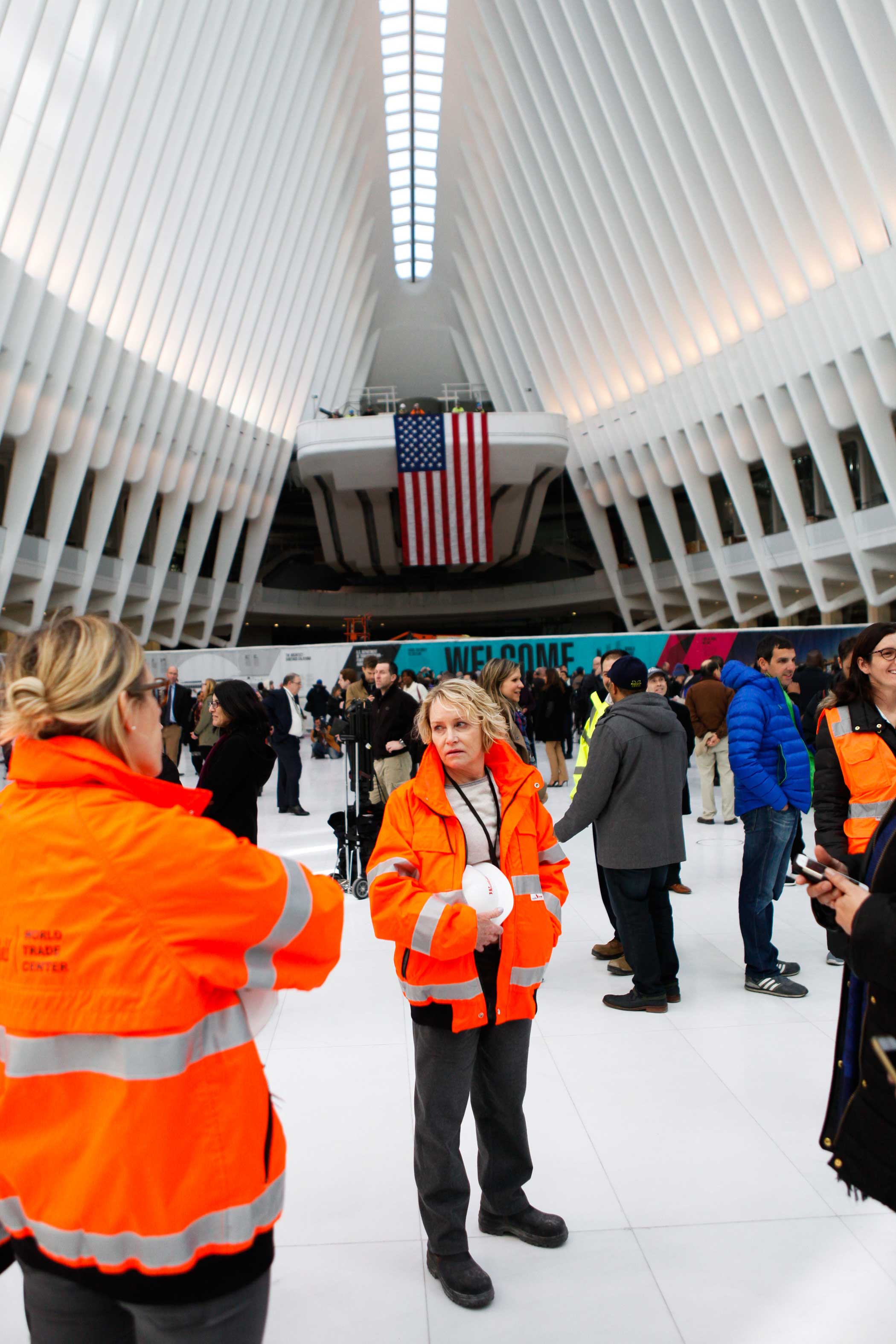
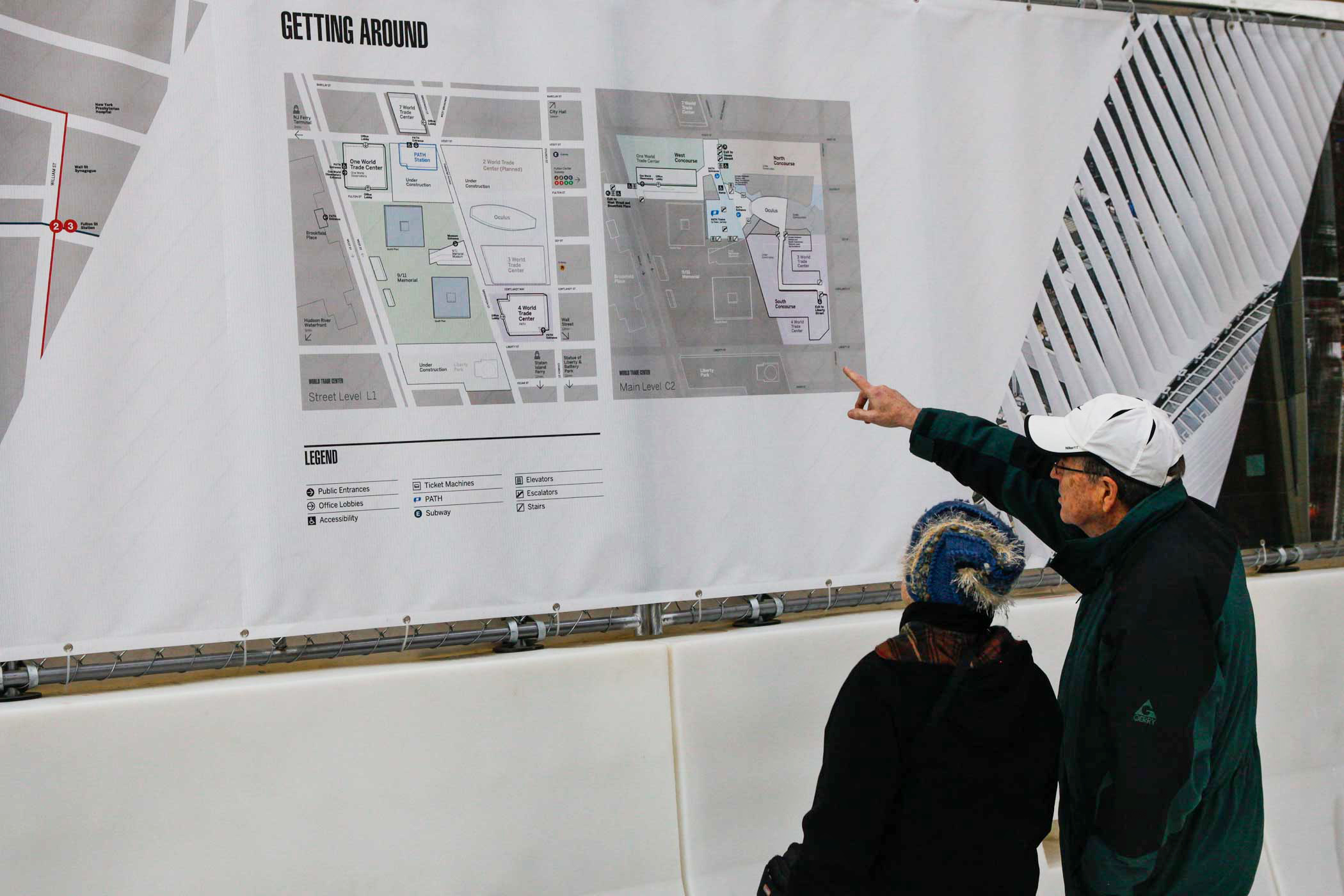

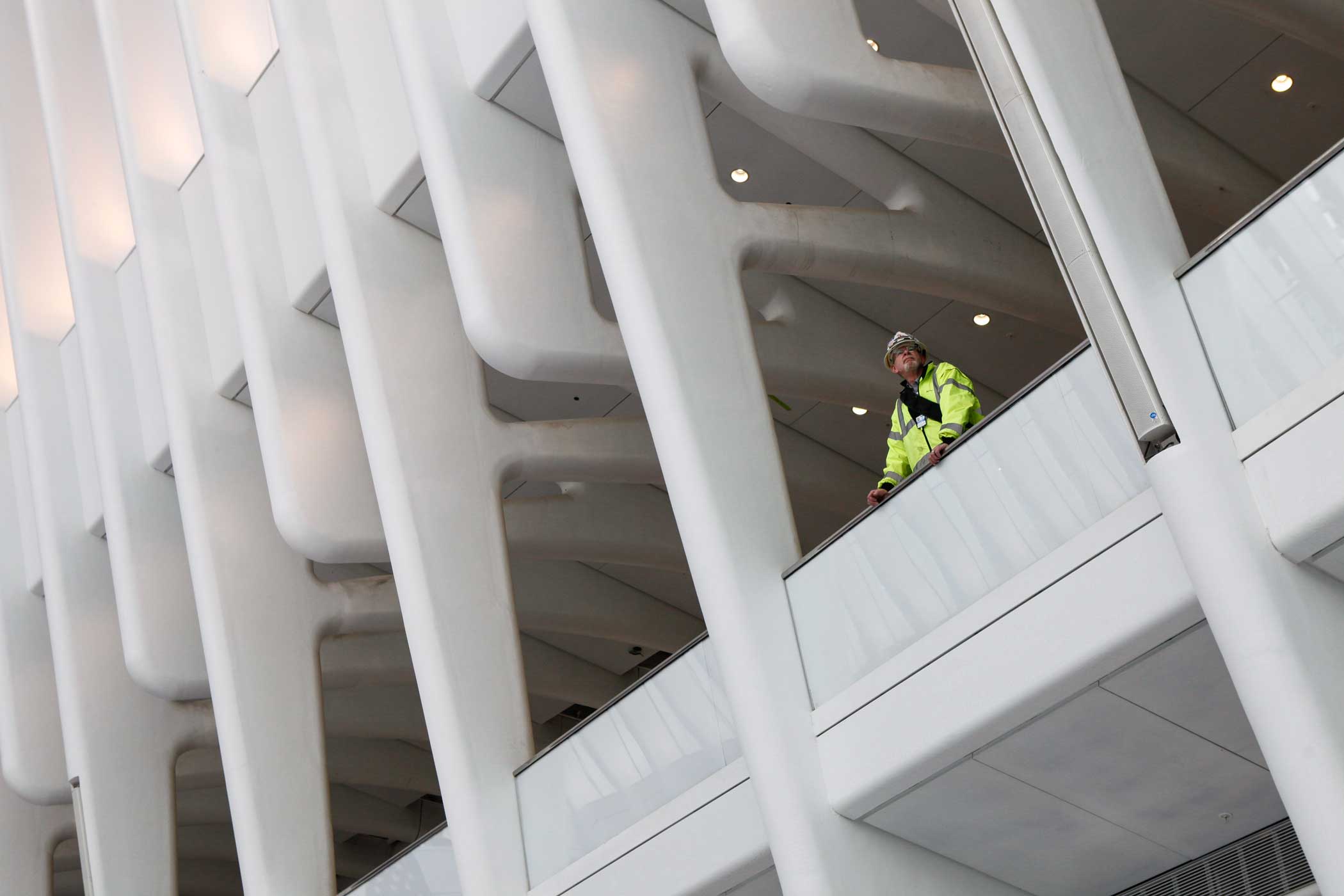
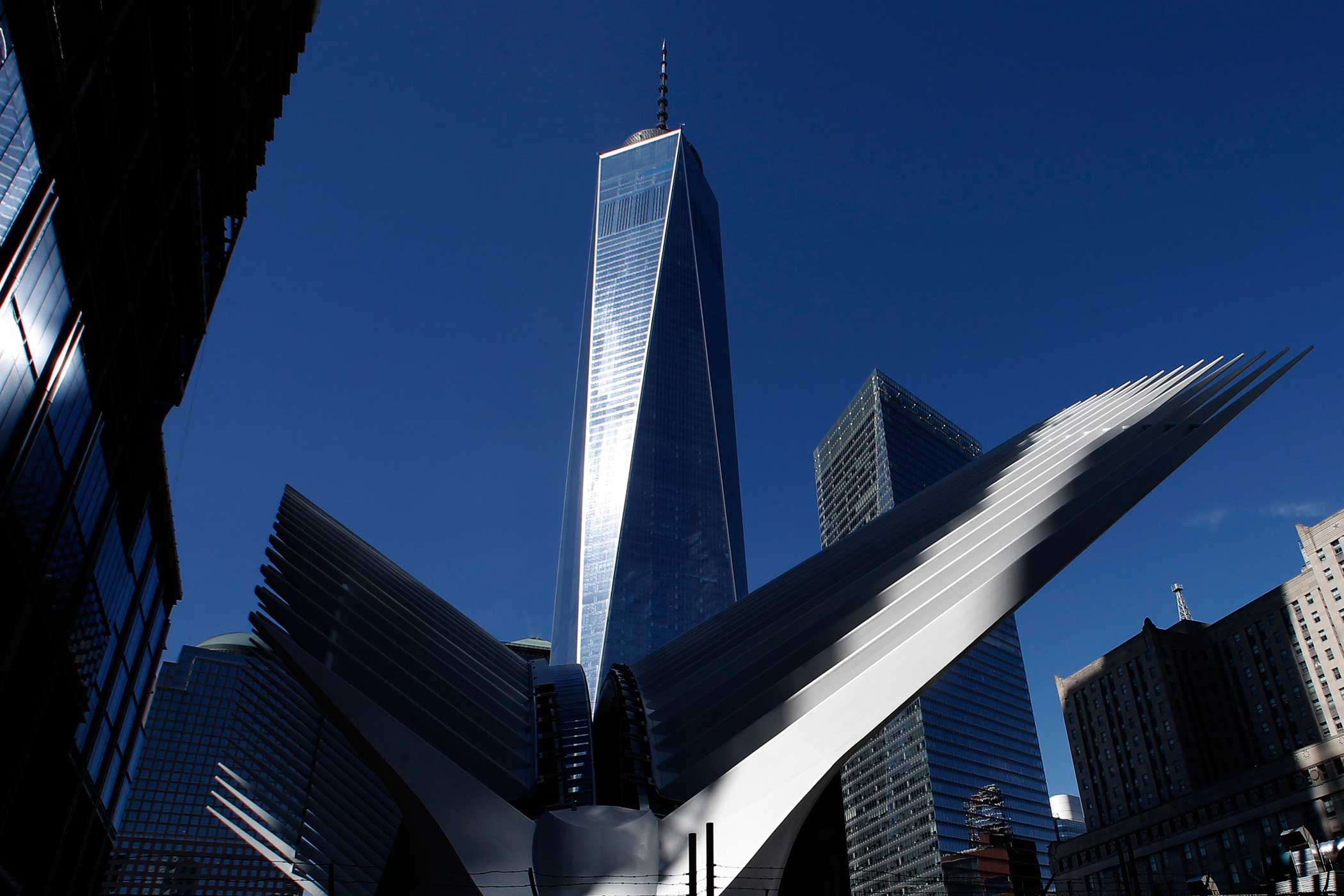
More Must-Reads From TIME
- The 100 Most Influential People of 2024
- Coco Gauff Is Playing for Herself Now
- Scenes From Pro-Palestinian Encampments Across U.S. Universities
- 6 Compliments That Land Every Time
- If You're Dating Right Now , You're Brave: Column
- The AI That Could Heal a Divided Internet
- Fallout Is a Brilliant Model for the Future of Video Game Adaptations
- Want Weekly Recs on What to Watch, Read, and More? Sign Up for Worth Your Time
Write to Julia Zorthian at julia.zorthian@time.com